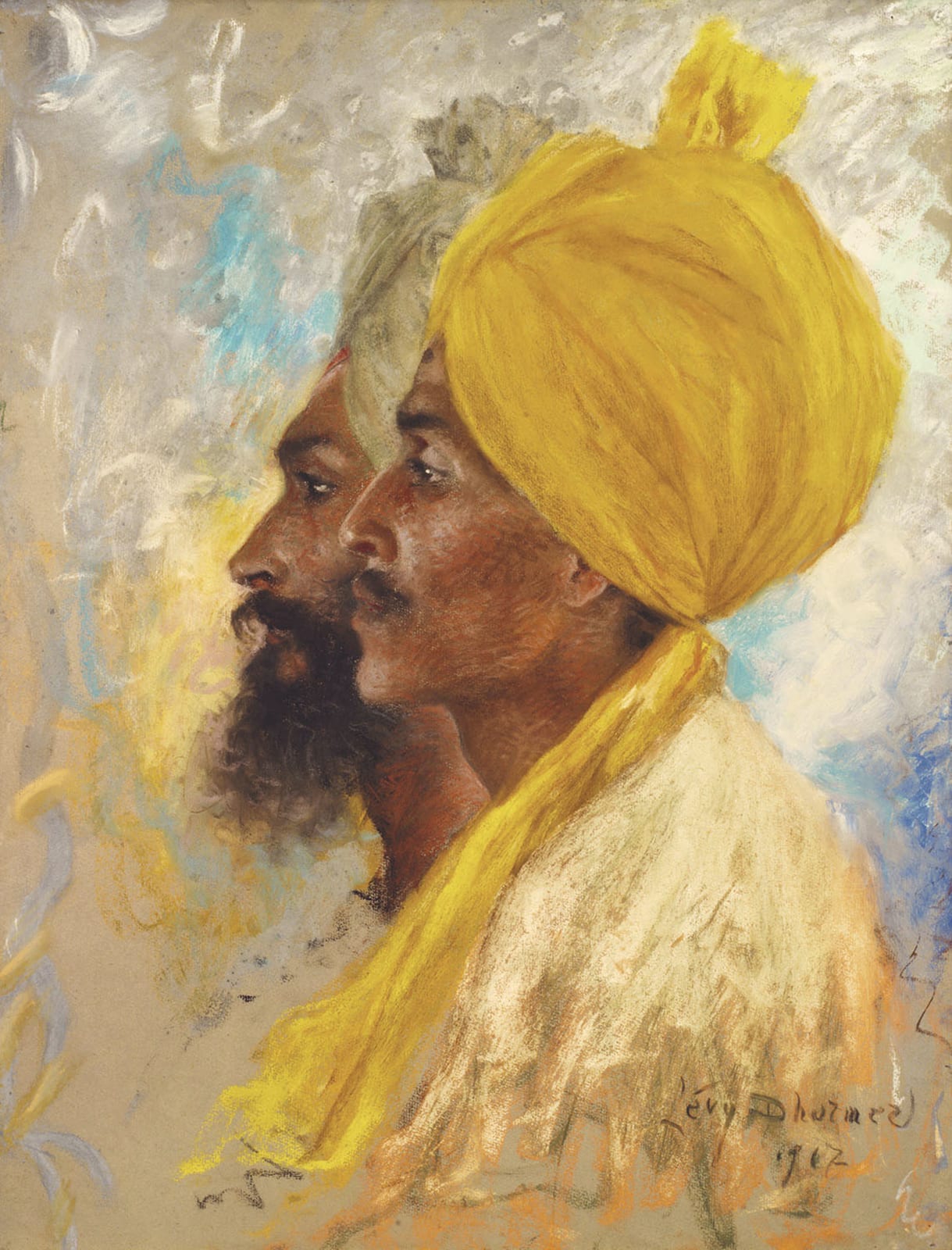-
Artworks

Lucien LEVY-DHURMER
Two Sikhs, 1917
SOLD
Pastel on beige paper610 x 473 mmSigned and dated lower left: Lévy-Dhurmer / 1917Exhibitions
Brussels,1928.
Literature
The Dictionary of Art, edited by Jane Turner, London, Mcmillan, 1996, XIX, p. 283;
Autour de Lévy-Dhurmer: visionnaires et intimistes en 1900, exhibition catalogue (Paris, Grand Palais, 3 March – 30 April 1973), Paris, Editions des museés nationaux, 1973;
Lévy-Dhurmer, catalogue of the exhibition curated by Camille Mauclair, (Brussels, Galerie des Artistes Français, 20 December 1927 – 3 January 1928), Brussels, 1928, cat no.31.
Lucien Lévy, the son of Salomon Lévy and Pauline-Amélie Goldhurmer, was born in Algiers in 1865. Moving to France, he enrolled at the Ecole Supérieure de Dessin et de la Sculpture in Paris in 1879, studying under Wallet and Raphaël Collin. On completing his training, he initially found employment as a lithographer and subsequently joined Clément Massier’s works near Cannes as a ceramist, working there from 1887 to 1895. At about this time Lévy took up pastel and oil painting, going on to devote increasing time and energy to both techniques. After a brief trip to Italy, he returned to Paris in 1895 and held his first one-man exhibition in George Petit’s celebrated gallery the following year. Thanks to the twenty-four works on display (sixteen pastels, two sanguine works and six paintings), his reputation soared and from the year after he was showing his work regularly at the Salon de la Societé Nationale des beaux arts.
Lévy’s work, which was initially heavily influenced by Symbolism in both stylistic and iconographic terms, began to move away from this tendency in the early 20th century.
The drawing of Two Sikhs, dated 1917, shows how Symbolism was transformed into a far more intimistic style of painting, where the dreamlike echo still remains but in the evanescent background from which the two figures emerge as though in a magical vision. The surface is painted with small, overlapping dabs, a technique which allows the light to materialise into vibrant life.
The two men portrayed, followers of the Indian Sikh religious movement, are both shown in profile, sporting turbans, their gaze earnest but at the same time confidently serene in the knowledge of their own mysticism. Lévy’s love of the Orient was forged in the course of the numerous trips that he made to Morocco and India, where he was to find the immense inspiration into which he delved for his delicate pastels.
As we can see from the label on the back of the drawing, Two Sikhs was shown at the Galerie des Artistes Français in Brussels in December 1927 under the title Deux profils d’hindous. An identical version of this drawing, but in oil on canvas, entitled Algériens was donated by M. and Mme. Zagorowki to the Musée Paul Valéry in Sète in 1976.
Join the mailing list
Subscribe to our newsletter to receive all the news about exhibitions, fairs and new acquisitions!
